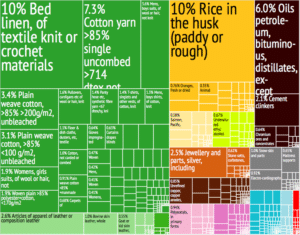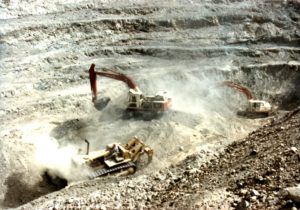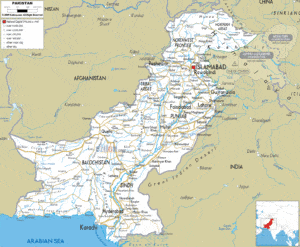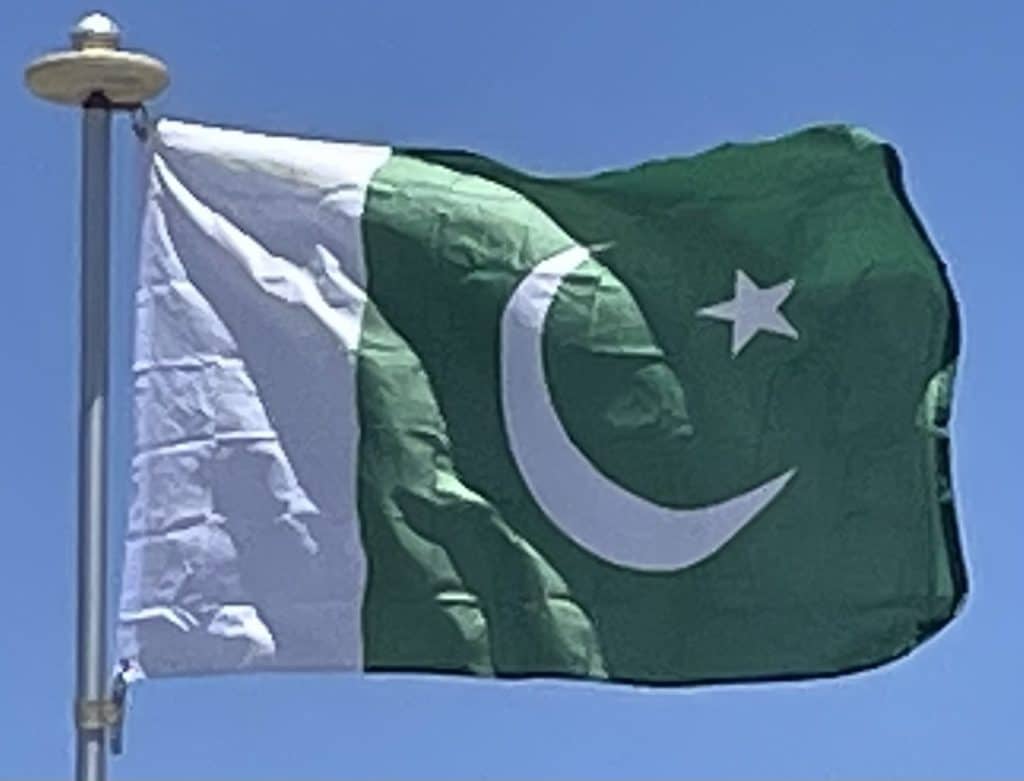
The structure of the Pakistani economy has changed from a mainly agricultural to a strong service base. Agriculture as of 2015 accounts for only 20.9% of the GDP. Even so, according to the United Nations Food and Agriculture Organization, Pakistan produced 21,591,400 metric tons of wheat in 2005, more than all of Africa (20,304,585 metric tons) and nearly as much as all of South America (24,557,784 metric tons). Majority of the population, directly or indirectly, is dependent on this sector. It accounts for 43.5% of employed labor force and is the largest source of foreign exchange earnings.
A large portion of the country’s manufactured exports is dependent on raw materials such as cotton and hides. The country is also the fifth-largest producer of cotton, with cotton production of 14 million bales from a modest beginning of 1.7 million bales in the early 1950s; is self-sufficient in sugarcane; and is the fourth-largest producer in the world of milk.

Industry is the third-largest sector of the economy, accounting for 20.3% of gross domestic product (GDP), and 13 percent of total employment. In 2012 and 2013, the cement industry in Pakistan became the most profitable sector of the economy.
The textile industry has a pivotal position in the manufacturing sector of Pakistan. In Asia, Pakistan is the eighth-largest exporter of textile products, contributing 9.5% to the GDP and providing employment to around 15 million people (some 30% of the 49 million people in the workforce). Pakistan is the fourth-largest producer of cotton with the third-largest spinning capacity in Asia after China and India, contributing 5% to the global spinning capacity.

Services sector has 58.8% share in GDP and has emerged as the main driver of economic growth.
Transportation:
Motorways of Pakistan are a network of multiple-lane, high-speed, controlled-access highways in Pakistan, which are owned, maintained, and operated federally by Pakistan’s National Highway Authority. As of 20 February 2020, 1882 km of motorways are operational, while an additional 1854 km are under construction or planned.
Pakistan’s motorways are an important part of Pakistan’s “National Trade Corridor Project”, which aims to link Pakistan’s three Arabian Sea ports (Karachi Port, Port Bin Qasim and Gwadar Port) to the rest of the country through its national highways and motorways network and further north with Afghanistan, Central Asia and China. The project was planned in 1990. The China Pakistan Economic Corridor project aims to link Gwadar Port and Kashgar (China) using Pakistani motorways, national highways, and expressways.

Highways form the backbone of Pakistan’s transport system; a total road length of 263,942 kilometers (164,006 miles) accounts for 92% of passengers and 96% of inland freight traffic.
The Pakistan Railways, under the Ministry of Railways (MoR), operates the railroad system. From 1947 until the 1970s the train system was the primary means of transport until the nationwide constructions of the national highways and the economic boom of the automotive industry. Beginning in the 1990s there was a marked shift in traffic from rail to highways; dependence grew on roads after the introduction of vehicles in the country. Now the railway’s share of inland traffic is below 8% for passengers and 4% for freight traffic. Pakistan expects to use the rail service to boost foreign trade with China, Iran, and Turkey.
